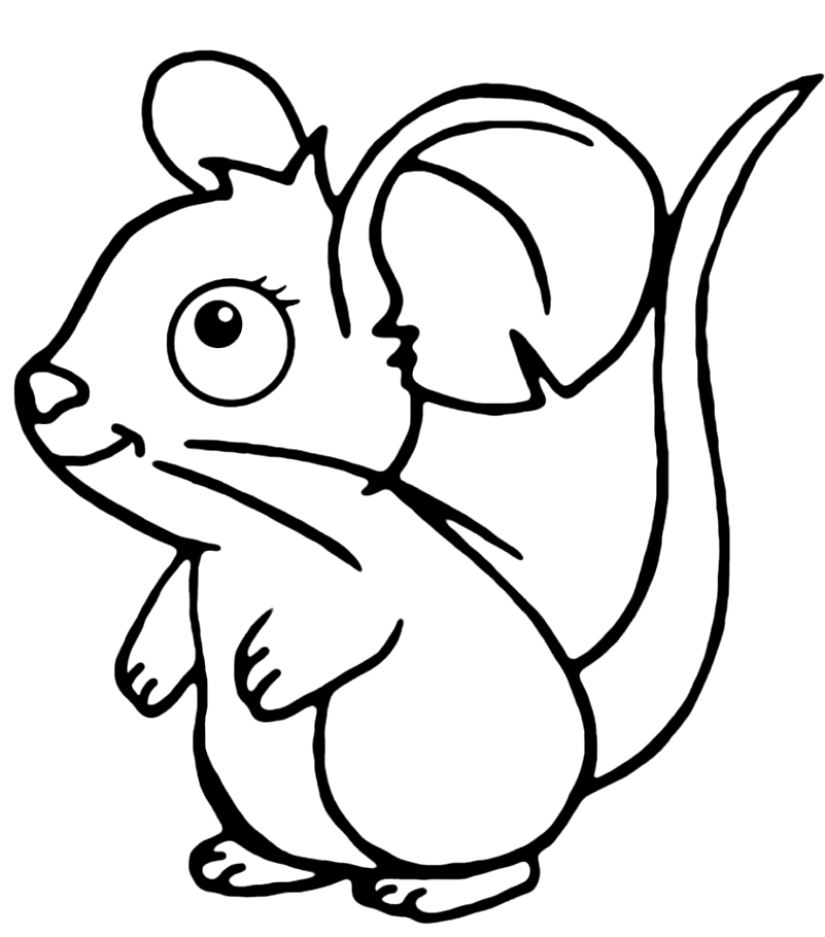Mice-Rats
Let's get to know our little friends better with the mice coloring pages. We have prepared mouse coloring pages for these cute animals that can live anywhere. We hope you enjoy our pages for the mouse, a rodent that can be found all over the world, except for the polar regions. We will need some colored pencils for these pages; We have main colors like Black, Grey, Brown, Yellow.
Mice-Rats coloring pages (free printable)
Working with our carefully selected coloring pages is completely free. Now I want to give interesting information about Mice; The length of the body of a mouse, depending on the species, is covered with short fur, varies from 5 to 19 cm, and is doubled with a tail. These rodents have a rather short neck. They have pointed muzzles, small black eyes and small semicircular ears, allowing mice to hear well. The thin and sensitive mustache growing around the nose gives the opportunity to perceive the environment perfectly. Mice, unlike hamsters, do not have cheek pouches. There are 5 short fingers on each leg of the mouse. The surface of the tail is covered with sparsely hairy cornified scales. Mouse color is usually characterized by shades of gray, brown or red, but there are variegated and striped mice, as well as white mice. Mice are usually active in the evening and at night, resting during the day by sleeping. They communicate with each other with the help of a thin voice.
Mouse Species
Mouse species include Field Mouse, Yellow-Necked Mouse, Herbivorous Mouse, Eurasian Harvest Mouse, House Mouse, Striped Mouse, and Sticky Mouse. Some differences have been observed in terms of hunting, feeding and appearance in different habitats.
- House Mouse: These mice are very small creatures. Their size and structure vary depending on the climatic conditions they live in and their diets. These mice are usually around 10 cm in length. They do not come to homes much in hot weather. However, they settle in houses in cold weather in winter and become partners with people's food.
- Sewer rat: As the name suggests, this species lives in sewage waters. These mice are quite small. They can be up to 30 cm. They have a strong and at the same time dangerous structure. They are known to attack people and fields in natural disasters or in some special cases. They live as colonies and these colonies are quite crowded.
- Roof Rat: Roof rats live in the basements or roofs of houses. They are considerably larger than house mice. However, they are shorter than sewer rats. They can be between about 20 and 25 cm. Their nails and feet are quite strong. Thus, they have the ability to climb to the upper floors of buildings.
- Mole rat: Blind mice usually do not live in houses, but among crops. They live underground. Their eyes are located under the skin. They nest underground in fields and crop areas. They feed on the roots of tuberous plants. Due to the fact that they live under the ground all the time, their skin is very thin and also extremely sensitive.
- Water Mouse: The structures of these mice are different from other mice. Its body is longer and there is hair on its tail. There are curtains between the fingers. These curtains make it easier to swim in the water. They can be found anywhere during the daylight hours. They are fed on a plant-based basis. Apart from this, it also consumes creatures such as small fish, mussels and shrimps in the water.
- Field mouse
- As the name suggests, this breed lives in fields. They are between 16 and 18 cm in length. They reproduce quite quickly. It is a species that causes a lot of harm to humans. They feed on cultivated fruits and vegetables in the fields. This means that they do a lot of damage to crops.
- Forest Mouse: Although it is similar to other mouse species in terms of structure, it is quite different in terms of lifestyle. They live in natural environments. They make their nests in tree hollows or underground.
Mouse Life
The average mouse lifespan is 6 years. Their lifespan is not very long, as there are too many predators in their habitat. While there are predators such as snakes and eagles in the natural environment; In city life, cats are their worst enemies.
What Are the Names of Pet Mice?
Rodents can often be kept in homes as pets. They are quite docile and highly intelligent animals if domesticated. Domestic rodents are hamsters and guinea pigs.
Hamsters are similar in appearance to other mice. However, these creatures are quite different. The dorsal areas are brown. The abdomen and feet are white. However, there are also varieties with different colors.
Rat species kept as pets are extremely easy to care for. A cage and a balanced diet will suffice for this. Domesticated mouse species make good companions.
Although small, these creatures are very active. Therefore, their cages must be large. There should be several places in the cage where they can hide and sleep. They have a healthy structure. However, they need to go to the vet regularly.












